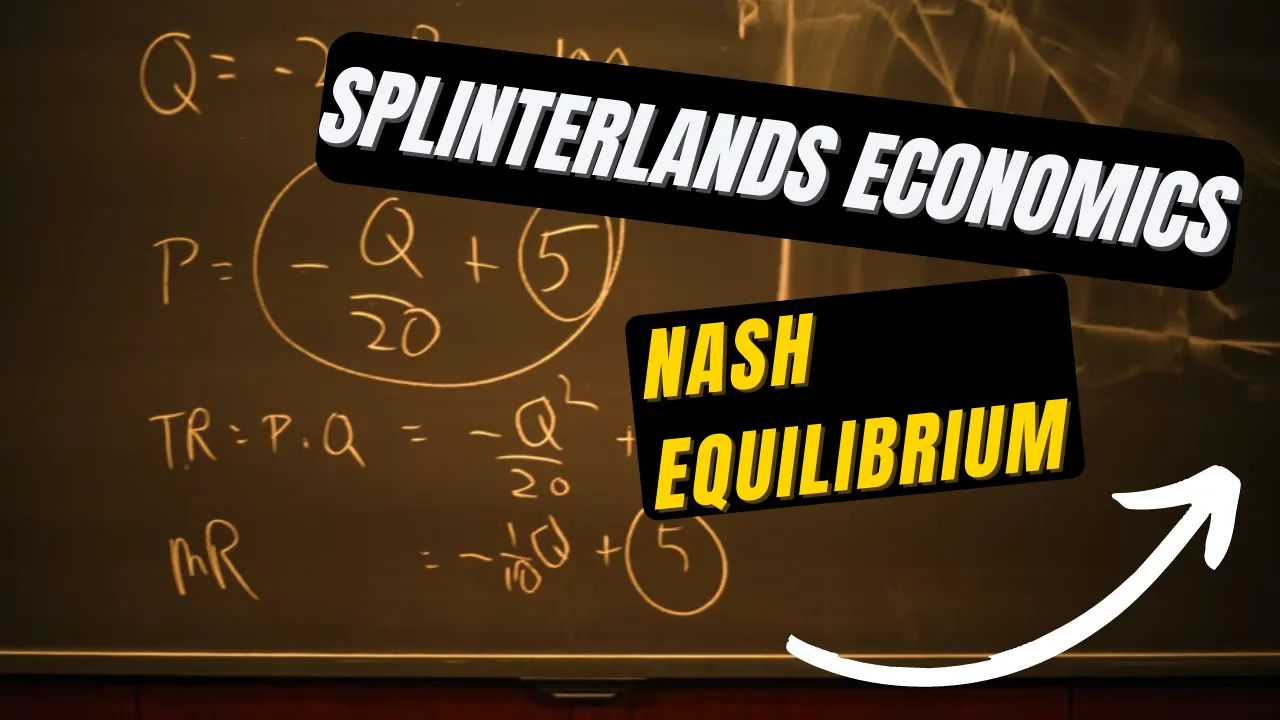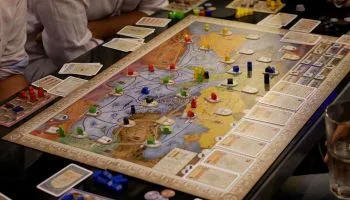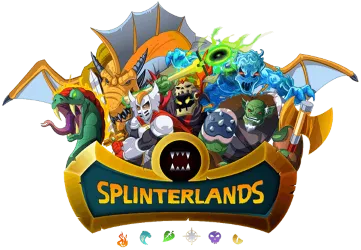Hello everyone! We are back again today with another edition of Splinterland Economics - a series in which we introduce a basic economic concept and then apply it to Splinterlands. If this is your first time reading, just to tell you a little bit about myself: my day job is in an unrelated area but I consider myself a little bit of economics nerd - I read a little (or maybe way, way) more news than I should, double majored in econ, and am obsessed with optimization. I love the way Splinterlands is equal parts card game and resource allocation game. My goal with these articles is to share a little bit of what I know with you all.
Our subject today comes from game theory and has been around for a while, but it is a good one. It deals with what happens when multiple players encounter a given situation, and is likely something you have already heard about if you watched A Beautiful Mind. Today, we'll be talking about the concept of a Nash Equilibrium!

What is a Nash Equilibrium?
As I mentioned in the introduction, a Nash Equilibrium is a concept in game theory describing a game or scenario between multiple agents who much pick a strategy. A Nash Equilibrium is a point at which all of the agents have chosen a strategy and that none of them are incentivized to change that strategy. Do note that scenarios can have multiple or no Nash equilibriums, and that a strategy may be a mixed or probabilistic one (that is, choosing to play one strategy a specific fraction of the time). And the fact that a scenario results in a Nash equilibrium does not necessarily mean that the outcome is optimal. For example, a Nash equilibrium of the Prisoner's Dilemma is for both prisoners to consistently betray each other, resulting in a greater total amount of jail time.
Nash equilibriums are of particular interest to us because it is likely (though certainly not guaranteed!) that is there is a Nash equilibrium that exists, then players will eventually adjust their strategies to reach it. In practice this can take quite a bit of time though, since it requires all of the agents making decisions to have more or less perfect information, and they also need to recognize the situation and optimize their actions accordingly. Despite the limitations, identifying Nash equilibriums is an extremely useful tool to have while analyzing scenarios or systems, and predicting likely outcomes or interactions between players.
Nash equilibriums may be applied to a wide variety of situations. Just to name a few, being able to identify and understand a Nash equilibrium tells us how companies choose to spend money on advertising, why people choose to to go movies (or hunting) in groups, and explains why you may see people choosing different routes even if they have the same origin and destination (for more information, you can look up the advertising game, coordination game, and network traffic!).
How do we apply it to Splinterlands?
Splinterlands is a complex ecosystem with a multitude of players who make investment and gameplay decisions in response to actions taken by the developers and their fellow players. When it comes to battles, there will often be a subset of card combinations with the greatest chances of success in a given situation or ruleset. These combinations are referred to as the "meta", and it is likely that the Nash equilibrium will consist of playing some of those strategies. Hopefully, if the game has been designed well there should be no single dominant strategy and it should be some mix of several them.
Similarly, players must make decisions whenever there is an update to the game. Were there new cards released to play with? Different rulesets introduced? Changes made to the rewards algorithm? Due to the facts that players battle each other and that the rewards pool for ranked play is shared among all players, decisions made to invest in and/or play cards by one player affects the payouts for all of the other players. This means that there is the potential for a Nash equilibrium, with new conditions arising whenever any changes are made. And in Splinterlands, those changes tend to come along often!
Why should we care?
For anyone who has participated in sports (or even for people who have not), you may be familiar with the concept that it is much easier to get the ball by moving towards where the ball will be, instead of merely chasing after wherever it is at the current time. It is, however, much more intuitive to simply run after that ball. That is why you may see kids who have just been introduced to soccer (or football, for you non-US residents) playing "bunch ball" and all running after the ball, while a strategy with greater chances of success would be to spread out more and be able to pass the ball to each other.
While it is important to remember that not every situation will have a Nash equilibrium and that a Nash equilibrium may not occur even if one exists, recognizing potential Nash equilibriums can help you to more accurately predict the outcomes of events or "shocks" in order to run to where the ball will be in the future, instead of where it is right now. Whether you are playing a game, managing your investments, or navigating a social situation, recognizing Nash equilibriums can help us to make better decisions for ourselves and have a deeper understanding of the situation.
Thank you so much for reading all the way to the end. Interested in seeing some more of my writing in the future? Be sure to give me a follow! In the meantime, if you'd like to see some of my recent posts:
Looking Back, Looking Forward: 1 Year in Splinterlands - A look back at my first year playing Splinterlands.
Splinterlands Economics: Gluts - An overview of the concept of gluts, and how we can apply it to Splinterlands.
A Stitch in Time - Using Temporal Master in Battle! - Last week's battle challenge, featuring Temporal Master!
Thinking about giving Splinterlands a try but haven't signed up yet? Feel free to use my referral link: https://splinterlands.com?ref=bteim, and be sure to reach out to me if you have any questions!



